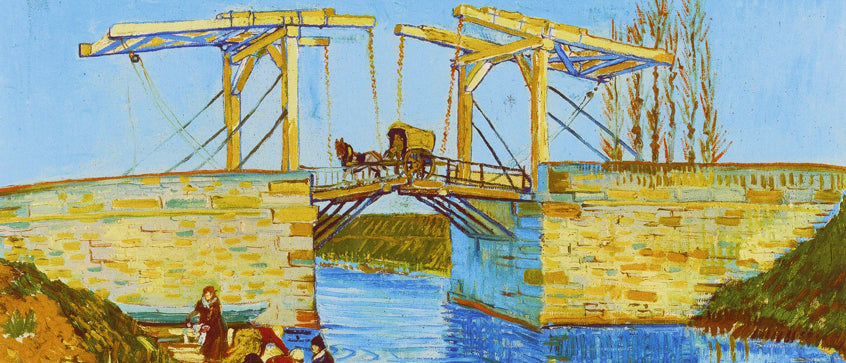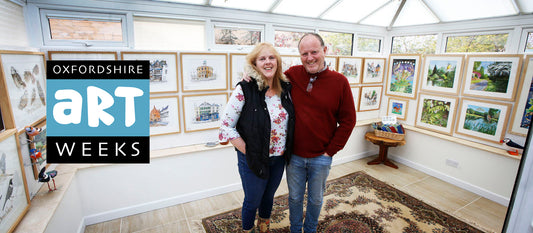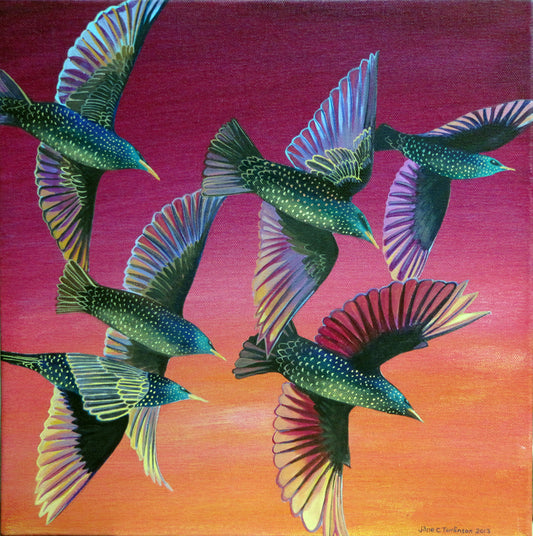
Van Gogh in Arles - a walk in Vincent's footsteps
Van Gogh arrived in Arles in the south of France in February 1888.
Vincent van Gogh sought subjects, light, warmth and colour for his paintings. He had other romantic reasons too, books he’d read, the legendary beauty of Arlesienne women, and to find scenes which reminded him of the Japanese prints he collected. He found an ancient town and surrounding countryside which fuelled his creative mojo like never before. Arles moved him to make most of his finest drawings and paintings.

Some of the places he painted still exist largely unchanged. We sought out traces of Van Gogh in Arles on a trip in 2007.
The Old Hospital
The Old Hospital on Rue Dulau is where Vincent was a patient after the infamous earlobe severing episode.
The hospital’s courtyard cloister garden is maintained now as it was when Vincent was there with formally laid out flowerbeds, trees and a central fountain and pool.

My sketch of the hospital courtyard, 2007
It’s fascinating to see how Vincent he translated the scene into a composition. Squashing the space, altering the viewpoints, tilting the picture plane, forcing angles to do things that the eye cannot see. In doing all this, he makes a picture which is more descriptive of the actual scene, more about how it is than how it looks. And yet you can still see the reality of each element.
I thought I’d have a crack at it too, from the opposite side of the courtyard from where Vincent sat.
Trinquetaille Bridge

Vincent’s Trinquetaille Bridge

In Vincent’s day, the Pont de Trinquetaille was a fairly new bridge, and the only bridge over the Rhone as it flows past the city. He was intrigued by the steps up to the bridge and the view of the arch as the riverside road passes beneath.The little sapling Vincent shows us in his painting of October 1888 is now a splendid, mature plane tree.
Cafe terrace and the Rhone

Vincent’s Cafe Terrace at Night
Back in the old Roman town centre is the Place du Forum. This is where Vincent made a painting of a café terrace at night, allegedly illuminating his easel by sticking candles to his straw hat. It's now one of the best loved paintings of Van Gogh in Arles.
The café is now restored to how it might have looked in Vincent’s day. It’s a great place to stop for a coffee. (However, the food was poor and overpriced when we visited.) It felt very special to be sitting in the subject of painting I have admired for many years! No one puts yellow and blue together quite like Vincent.
From the Place du Forum, we followed the narrow streets north towards the river again, and walked along the high levees of the south bank as it turns south, to the place from where he painted the breathtaking Starry night over the Rhone.
For more on these sites see my blog “Starry nights with Vincent van Gogh“.
Site of the Yellow House

In 1888, the Yellow House on Place Lamartine stood just outside the old city walls, close to a bend in the river.
In Vincent’s day it was a busy wharf of barges carrying goods to and from the town. He returned to the riverbank many times to paint the open wooden boats and their cargoes, and the hustle and bustle of ordinary working people’s live.
Most of the houses in Arles are painted yellow. Naples Yellow to be precise, with green shutters and roofs of orange pantiles. There was nothing unusual about the little yellow house he rented. Except he wanted to use it to establish a ‘studio of the south’ and invite other artists to join him.
It was romantic notion, which failed disastrously when Paul Gauguin (reluctantly) came to join him.
The nine weeks they spent together in the Yellow House sparked many of the finest works of art ever made, but took a terrible toll on Vincent’s fragile health, resulting in the ear slashing episode.

The site of the Yellow House today
The Yellow House is now gone; bombed during an Allied air-raid on the town in 1944. US bombers were aiming at the nearby railway line, but missed and partly destroyed the house. The building that was behind the Yellow House still stands and can be clearly seen in Vincent’s pics of his little home.
Place Lamartine is now a traffic roundabout, but a display board, featuring Vincent’s painting of the Yellow House, now stands where the house did.
On this spot some of the best known, best loved and most influential works of modern art were conceived, carried to and from, repainted, touched up, copied and shipped out from, back to his brother Theo in Paris. And from this place too, is where Vincent wrote many of his hundreds of very moving, emotionally charged letters.
The Roman amphitheatre

Vincent’s Les Arenes

We wandered back into the old town down the Rue Voltaire, which Vincent must have known like the back of his hand, towards the Arena, the Roman amphitheatre. It dominates the town. It is still used for bullfighting today. Though I wish it wasn’t.
He made a painting of one of the corridas, though made the crowd the subject, rather the action in the ring. The habit of matadors who cut off a just-killed bull’s ear to give to their sweethearts may have been one of the reasons why, when Vincent cut off his ear, he presented his lobe to Rachel, a sex worker who he made frequent ‘hygienic visits’ to.
The Old Mill

Vincent’s Old Mill

A short walk east takes you back through the city walls and over the main road and railway line to an old mill on Rue Mireille which once stood on the edge of town.
The round building, and beyond it the plain of La Crau, appealed to Vincent, and in September 1888 he set about painting it. In recent years it has become dilapidated, and urban sprawl behind it obscures the once pastoral view. When we visited building was being renovated, and from the progress we saw they are using Vincent’s painting as a guide!
Public park

Strolling in the public park
We walked back south and then turned west toward a public park where Vincent set up his easel in October 1888 to paint, once again, ordinary people doing ordinary things; strolling in the park, reading a paper, sitting and gossiping.
Some of Vincent’s most workaday subjects are so very appealing. I think because of their simplicity we relate to them. Here’s Moth, strolling in the same point in the same park:
Les Alyscamps

Les Alyscamps today
From the park, we headed to the tree-lined old Roman cemetery of Les Alyscamps, with its lines of stone sarcophoguses, the resting places of recently christianised Romans. In autumn 1888, Vincent and his house guest Gauguin came here to paint more than once. Vincent dashed one off in one sitting while Gauguin laboured over his and moaned at Vincent that he’d rushed his.
Pont Langlois

Pont Langlois in 1888 by Vincent, and the Pont Langlois today.

We drove to the west of Arles to an ugly, modern bridge crossing a canal fed by the Rhone. Here, once stood a little wooden lifting bridge, constructed in the same way as the Dutch did – and do. It must have reminded Vincent of his native land. He painted the bridge at least three times using vibrant colours.
The bridge, which he called the Pont Langlois, after the name of the owner, was moved to its current location a few kilometres further south down the canal. It now straddles a what-looks-to-be disused lock cut, rather than projecting from big stone piers. And nobody does their washing there anymore.

Are you an admirer of Vincent van Gogh?
Check out my hand painted map “The life and works of Vincent van Gogh”
This blog was first published in 2007. Reworked and republished in 2023.



